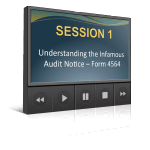Key Highlights this Week!
- MCDC Followup – we will highlight takeaways from the highly informative Lumesis/Bond Buyer webinar, MCDC – What’s Next for Muni Underwriters last week…it had TONS of great points for Issuers! Includes links to the replay and slides!
- Chicago Pension Blow – what happened and what it means.
- QZABs – Will these bonds be around to stay?
So…here goes…today’s Monday Muni Minutes!
Enjoy and have a great week! Deb
CURRENT EVENTS
Take-Aways: MCDC – What’s Next for Muni Underwriters – The Recap
Lumesis and the Bond Buyer hosted what was, in my humble opinion, one of the most highly informative and user-friendly webinars on MCDC to date.
With candor and even a bit of humor, the panel of experts – Gregg Bienstock, CEO of Lumesis, Pamela W. Peterson, Esq., Daniel M. Deaton, Esq., and Timothy Stevens, CFA, – discussed what led up to the MCDC, what happened as a result of the Initiative, and…what we should still expect to come from the enforcement perspective.
Before we go too far, I want to note: This is Deb’s analysis, and not intended to be legal or tax advice – nor am I promoting any product or service. I do, however, recommend you watch the replay if you missed it live.
So…Why did the MCDC happen?
The short answer to this question is this: The SEC believed that there was “systemic non-compliance” on the part of bond issuers. The SEC’s belief was that, as a whole, issuers did not treat continuing disclosure with due care and that this cumulative non-compliance was material to the market.
The panel pointed out that while individual issuer deficiencies might be minor, they were many…as in many issuers had problems. As such, the enforcement standards needed to get tighter.
Ouch! Unfortunately, I can’t disagree with that assessment.
Here are some key phrases Dan and Pam used to drive the MCDC home:
4 Memorable phrases:
- Compliance was a “canary in a coal mine”
- The market was desensitized – it was an echo chamber when SEC sent warnings
- SEC – Issuers and Underwriters – asleep at the wheel

- Cotton Farmer’s Analogy – It’s the quality of the cotton that matters when it arrives at the market
While these comments brought a smile to my face, they also made me realize this key fact: I, and I believe a decent majority of issuers and their underwriters, had to look no further than in the mirror to discover who brought about the MCDC. That’s right…
We are now dealing with the Initiative…
The panel discussed several high points of the $9.3 million in enforcement actions against 36 Underwriters.
Three key points to note:
- Enforcement actions cited are not all-inclusive to gauge materiality
- The SEC is using laws back to 1988 as their basis for review
- Underwriters WILL have much tighter diligence going forward – and they will need to refrain from taking issuer deals to market if disclosure requirements are not met
That last bullet drives home this key panelist point home – the MCDC is the sharp point on top of a long and heavy spear. No doubt.
So…what can you as Issuers (and the Underwriters) expect next?
The biggest point the panel made was this: It’s not over yet. We can expect at least one more wave of underwriter enforcement actions – Wave II they called it.
Next, expect issuer enforcement actions. Not sure when though…
A good point to note: Lumesis had a call with the SEC the day before the webinar and their sense is issuer enforcement will be at the entity level, not individual official level.
- The SEC will be doing reviews and looking at the 5 W’s
- Who, what, where, when, why (and I would add “how” just to cover PBU)
- The SEC is stressing MEANINGFUL generic due diligence
- Policies, procedures, backup data, documentation of reporting, etc
- Training and implementation will be key – organic, in-house or qualified consultants
In closing, I felt this was an excellent webinar. I just included the high points in my analysis. You can get links to replay info and the slides in Out & About.
[Editor’s Note: While Lumesis sells a software product geared at helping underwriters manage due diligence easier – their insights on the MCDC and what you and I, as issuers, need to do to assure we have access to the capital markets is really spot-on.]
OUT & ABOUT
Conferences:
There are about 30 conferences and regional events for the second half of 2015…
You can go to this Bond Buyer link to review what’s coming up and register!
Resources:
Replay: Webinar: MCDC – What Comes Next for Muni Underwriters
By: DIVER by Lumesis and hosted by the Bond Buyer
IT was AWESOME! In case you missed it…
Here is the replay link and the slides.
Check out the “muni deal of the week”…try if for FREE and look at it from the bondholder’s perspective.
On-Demand Post Issuance Compliance Training for Issuers
“Compliance Basics” – a FREE, 3-part video Compliance Framework training, plus the Monday Muni Minutes.
Just Released – with a valuable and amazingly cost-effective “team learning” option! NEW In-Depth Training, PIC Essentials: The Audit-Proven Blueprint – covering, The IDR – Form 4564, Project Accounting Boot Camp and our hot-button friend, PBU!
On-Demand Webinar
Resource: On Demand Replay of Continuing Disclosure after MCDC
Slides: Final Slide Deck for Continuing Disclosure after MCDC
Muni Market Minute Updates
(Quick news bits on topics we’ve covered in earlier MMM editions!)
Chicago Dealt Pension Blow in the Courts
In this free article from the Bond Buyer, you can read how Chicago lost on two of its four pension fund cases – both being ruled unconstitutional.
This ruling stymies the city’s efforts to address $20 billion in unfunded pension liabilities – which is choking the city’s efforts to recover and caused their bond ratings to “go junk.”
The city has vowed it will appeal to the Illinois Supreme Court…read the full article here.
[Editor’s Note: Pensions have been a huge economic stumbling block with Chicago as well as many other major cities facing financial duress – we will continue to watch this situation closely.]
Are QZABs Here to Stay?
Twin pieces of legislation, Senate Bill S. 1753, sponsored by Senator Sherrod Brown, D-OH and House Bill H.R. 3046, sponsored by Rep. Charlie Rangel, D-NY are geared at making Qualified Zone Academy Bonds (QZABs) a permanent financing tool in the nation’s academic infrastructure toolbox.
“Funding infrastructure for schools is critical to ensuring students’ safety and helping them achieve their goals in the classroom.” Brown said in a statement.
“Enhancing the Qualified Zone Academy Bonds program will help our nation make the necessary investments to rebuild and renovate our schools and ensure that all students – regardless of  their zip code – have access to up-to-date facilities as part of their education,“ he said.
their zip code – have access to up-to-date facilities as part of their education,“ he said.
Here are a few key features to note if passed:
- The national volume cap would be $1.4 billion per year
- QZABs would be direct-pay bonds
- They could finance new construction and renovations
- The private contribution requirement is easier to meet – 5% instead of 10%
[Editor’s Note: QZABs are part of the Rebuilding America’s Schools Act and both bills are referred to committee in the House and Senate for further review. Stay tuned…]
Back by Popular Demand….
Given the recent settlements by the SEC and focus on “what might be coming next” for issuers, let’s make sure we are all…
Solving the Compliance Puzzle!
I have to say that this is still one of my favorites – I fell in love with this graphic as it so clearly and brilliantly represents the puzzling complexity we are dealing with, as issuers, in meeting our compliance needs.
We also know that both the IRS and SEC are paying much closer attention to it these days – and that it is our obligation as issuers to understand (and have fully complied with) our respective bond covenants.
As part of this effort, each week for the next ten weeks, we will focus on providing tips, insights and resources for one new line of our compliance puzzle.
So, are you ready?
Today, we are going to take a closer look at the third line of our puzzle – Terms.
Terms, just like regulations, are a very complex topic.
As we begin, why are terms so important anyway?
Simply stated, terms which are agreed to during a bond issuance or refunding define the legal criteria for obligations the issuer, and all other parties to the transaction, must follow…
Here, the meaning of the term matters – a lot!
As you know, when working on the offering documents and related transcript items needed for your bond deal – the POS & OS (including Appendix A), and the vast array of Resolutions, Agreements and Certifications – there is a key point which can dramatically change the tone and impact of a sentence … the Terms. When you are reading a document and you see a word capitalized – it is generally a term.
As an example, I pulled the Official Statement of a bond deal I worked on a few years ago. The definition of terms was listed as part of Appendix C…and it was an alphabetized listing that spanned 22 pages!
Now, many terms have meanings which appear to be fairly standardized.
Terms that are standardized across the municipal community. Terms such as Accountant, Bondholder, Book Value, DTC and GAAP are good examples.
However, other terms can have very specific meaning to your organization.
A few of my favorite ones include Maximum Annual Debt Service, Obligated Group, Member and Authorized Representative.
It is also important to think about the context in which the term is used, particularly across documents.
During document review calls, we would spend considerable time clarifying the context of certain sentences, especially if it related to calculations or the timing of future reporting obligations.
Let me share an example: Continuing Disclosure & Quarterly EMMA Reporting
Your quarterly filing on EMMA is due 45 calendar days after quarter-end. Your Dissemination Agent (DA), who files it for you, needs the completed packet 15 business days before the due date. This means that your quarterly filing must be in the DA’s hands nearly 3 calendar weeks before the due date.
So, let’s walk through this timing: 
45 calendar days – 3 calendar weeks = roughly 3 weeks left.
3 weeks left to close the books, review the results, assemble & cross-check the EMMA packet, have it approved & certified by an Authorized Representative and timely submitted to the Dissemination Agent.
Is that a reasonable time frame for your organization?
If not, this one will hurt…again and again.
You can see how important it is to understand the terms in your bond transcripts. However, getting your arms around the “Big 3” below will help you effectively and efficiently document your compliance needs:
The “Big 3” documents in your transcripts:
- your Master Trust Indenture (your overarching covenant document)
- your Continuing Disclosure Agreement (periodic reporting on your bonds after issuance)
- your Tax Certificate (projected use of new $$ or proper use of original proceeds for refunding)
In closing, understanding the terms in your bond documents, while confusing at first, is really very doable.
Take small bites. For more information or other “terms” resources, check out our Knowledge Library. You can also ask a question in the comments section or reach out to us privately via e-mail and we’ll do our best to help.
We hope you found this segment helpful!
Stay tuned – next week, we will dive into possibly one of the hottest, high profile topics in post issuance compliance. It’s line 4 of the puzzle –Transparency.
We really do look forward to your feedback – and to provide the best content possible.
Based on recent requests, I will be working with a couple of “finance team experts” who will provide guest articles on selected topics in muni finance, including the new rules for MAs and the investor view. Are there other topics of interest?
Just shoot me an e-mail or drop us a line in the comments below and let us know, OK?
In closing, we are so excited that PIC Essentials: the Audit-Proven Blueprint is now available! A special welcome to members who joined us. We look forward to your comments, questions and chatting with you in the Private Facebook Group – Club PIC!
NOTE: You can still join the learning group here: PIC Essentials: the Audit-Proven Blueprint.
Plus, as we believe so strongly in the team approach to success, we are offering a tremendous “team discount,” where you and four additional compliance members within your agency or company can join the series right along with you…for only $70 more!
We hope you found this week’s edition of the Monday Muni Minutes valuable and informative.
Chat soon!
As always, your comments are welcome…scroll down and let us know what you think about any of the articles!
To your compliance success,
Debbie
The greatest compliment you can pay us is to share this newsletter with your issuer friends….
P.S. Remember, invite your issuer friends to join us on Issuer 2 Issuer and to get their free online training, PIC Basics!
P.P.S. PIC Essentials: the Audit-Proven Blueprint is now available! You can sign up for the informative, on-demand webinar series by clicking above! As we are strong believers in the team approach to compliance, you can include four additional members of your team (within the same agency please) to take the training for only $70 more – that is truly a great deal. We have also had requests for one-on-one initial consultations as part of our PIC Essentials program offering…would that be valuable to you?
P.P.S. Want a one-click way to get faster information? If you are on LinkedIn, you can get access to breaking muni news articles as well as interesting compliance tips and resources, posted by us during the week. Join our private LinkedIn Group Page, and follow us on our Company Page.




